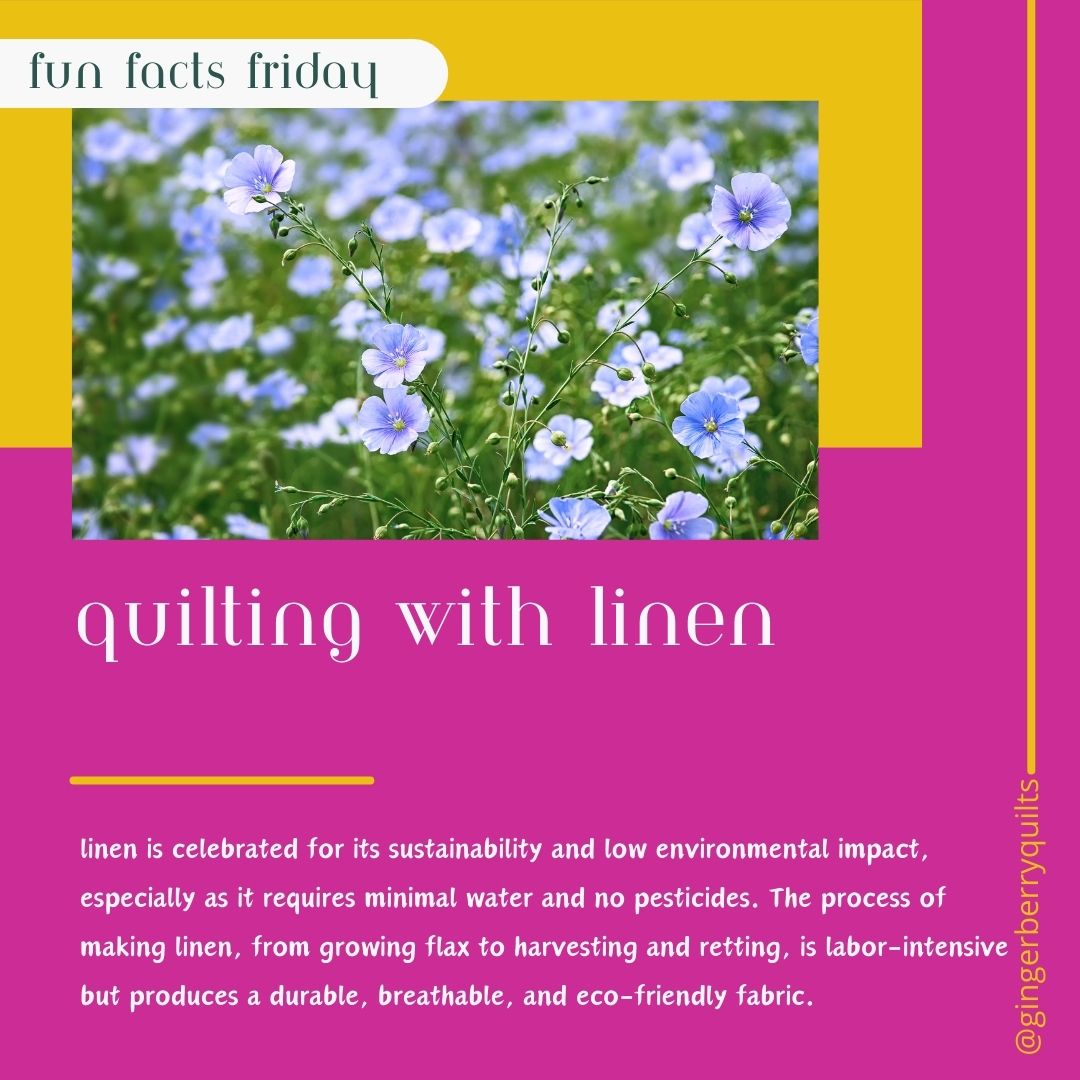
Fun Facts Friday!! Quilting with Linen.
Share
Continuing with the types of quilting fabric... Have you ever quilted with linen?
Of all the fabrics in the world, linen is one of the oldest textiles, dating back over 30,000 years. In ancient Egypt, linen played a key role in the economy as a type of currency and was widely used due to its absorbency and heat-conducting properties, perfect for the hot climate. By the 17th century, linen production flourished in places like the Netherlands and France. In fact, 95% of the world’s flax is grown in France, Belgium and the Netherlands, with the first being the largest exporter.
The process of making linen starts after the flax plants have been harvested, with a step called retting, where the fibers are separated from the stalk. To do this, the stalks are exposed to moisture, which helps break down the pectins that hold the fibers together. Typically, flax is laid out in fields, soaking up rain, dew, and sunshine for a few weeks. During this time, the fibers develop their natural color as they interact with the elements. After retting, the dried stalks are gathered up in bales and transported for the next step.
From here, the flax is ready for scrutching, a process that crushes the stalk between metal rollers to separate the fiber from the woody part (or "bast"). Along the way, by-products like linseeds, shives, and tow are collected—tow is the shorter, damaged fiber that’s typically used for things like upholstery stuffing and shives are the wooden refuse removed during the process (can be used as bedding for animals, fuel for fires or made into fiberboard).
Next comes heckling, which is basically combing out the shorter fibers and straightening the longer, luxurious ones (known as “line”). The short fibers are used for more rugged products, while the long fibers are prepped for spinning. To do this, machines called spreaders organize the fibers so that their ends overlap, creating slivers. These slivers are then stretched and thinned out through rollers, forming rovings, which are finally spun into yarn.
For the finest yarns, the long fibers are usually wet spun at about 60°C, producing a smooth, glossy thread perfect for clothing and fine linens. Dry spinning creates a coarser yarn, which is often used for things like furniture fabrics. Once the yarn is ready, it’s woven into fabric, where the warp and weft threads cross to create different weaves like twill, chevron, satin, or even velvet. Each weave gives the linen its own unique character, making linen not just durable and eco-friendly, but also incredibly versatile.
Today, linen is celebrated for its sustainability and low environmental impact, especially as it requires minimal water and no pesticides. The process of making linen, from growing flax to harvesting and retting, is labor-intensive but produces a durable, breathable, and eco-friendly fabric. It’s also biodegradable, anti-microbial, and becomes softer with time.
But...
Let’s be real: linen has a tendency to shrink, bleed, and unravel. So, if we want to be happy with the end result, we’ve got to do it right. That means handling our quilt pieces carefully and paying extra attention when finishing our seams. Linen stretches when sewing so be gentle. And don't be surprised to find a seam that has opened upon once it has been washed. But they do make the loveliest and softest quilts ever! I have one on my bed at home!
Happy Sewing!
Jody